Certified Jenkins Engineer
Jenkins Administration and Monitoring Part 1
Demo Access Control for Builds
In this guide, we’ll dive into configuring access control for Jenkins builds. By default, every build runs as the internal SYSTEM user, granting it full rights across all nodes and jobs. Using the Authorize Project plugin, you can enforce least-privilege principles by specifying which user context a build should run under.
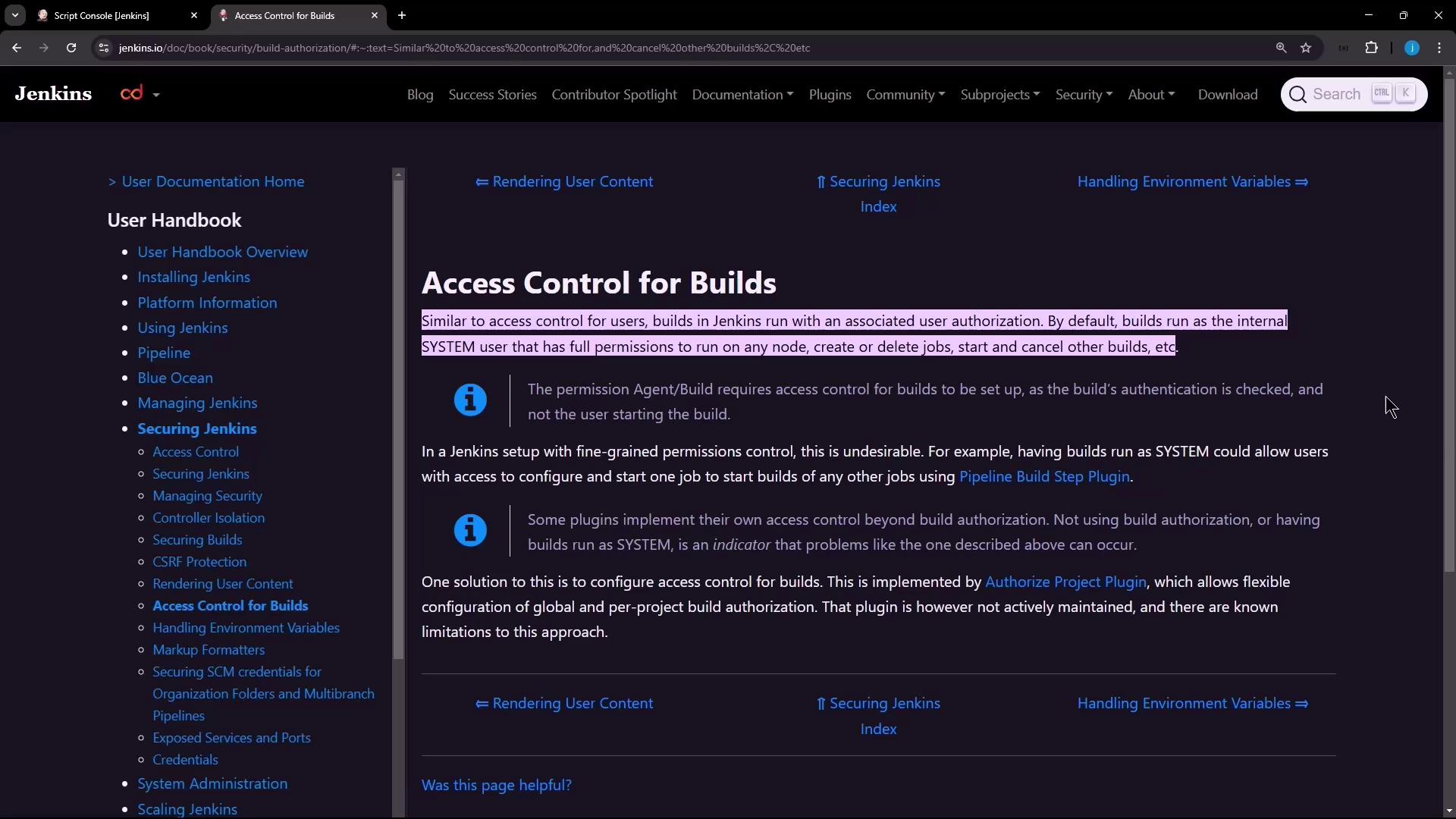
1. Installing the Authorize Project Plugin
The Authorize Project plugin enables builds to inherit an authenticated user’s permissions. You can install it globally to apply default strategies or enable it per job.
- Navigate to Manage Jenkins → Manage Plugins.
- In the Available tab, search for Authorize Project.
- Select and install the plugin.
- Restart Jenkins if prompted.
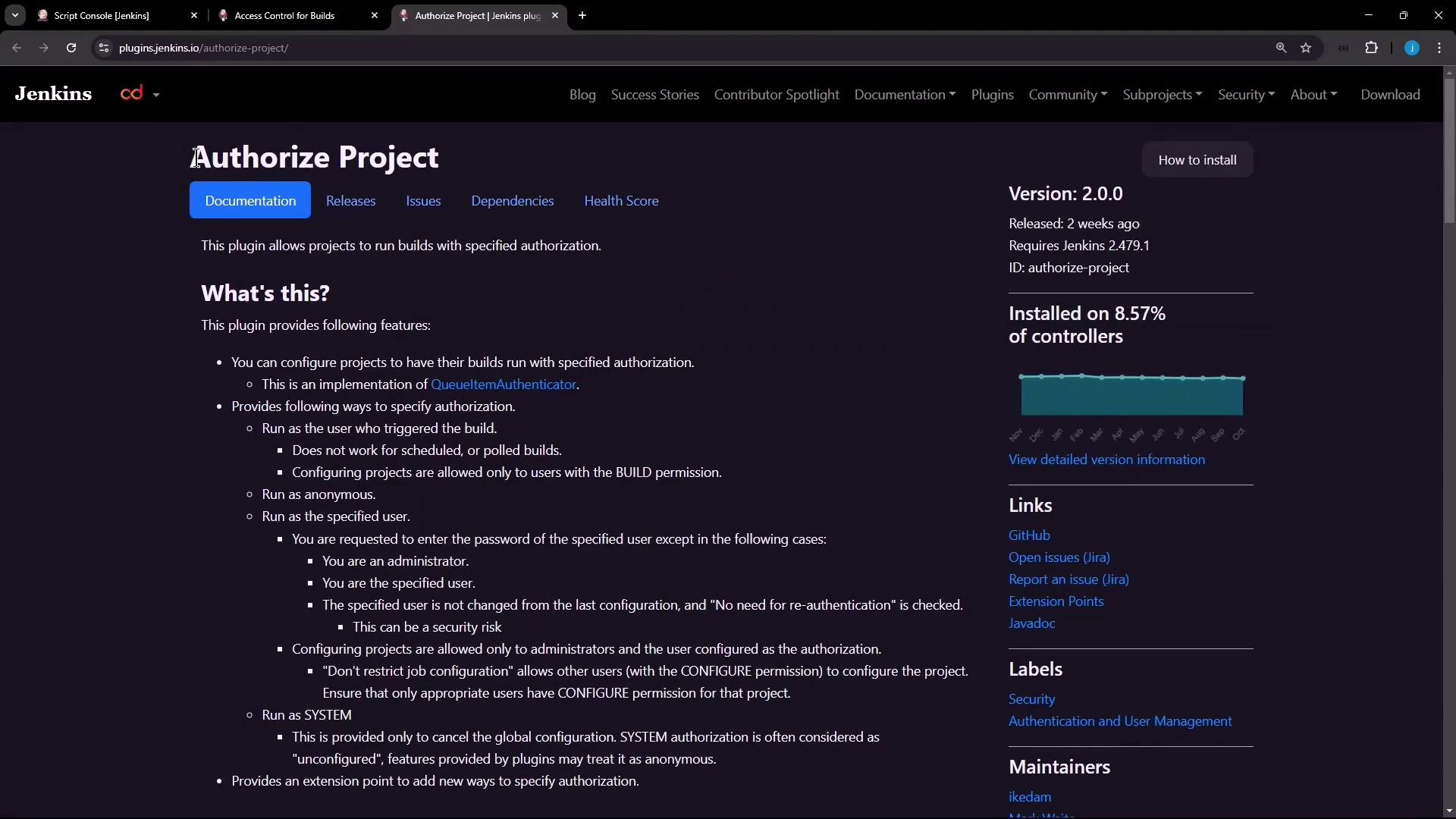
Note
After installation, verify compatibility with your Jenkins LTS version under Manage Plugins → Installed.
2. Verifying Default Behavior
Create a freestyle job named npm-version-test with a shell build step:
echo "Updating job config using Jenkins CLI"
node -v
npm -v
exit 1
Run the job without any authorization configuration. Your console output will show:
Started by user siddharth
Running as SYSTEM
Building on the built-in node in workspace /var/lib/jenkins/workspace/npm-version-test
...
+ node -v
v22.0.6
+ npm -v
10.8.2
...
Finished: FAILURE
The line Running as SYSTEM indicates the build is executed with system-level privileges.
3. Configuring Global Build Authorization
You can define a default authorization strategy for all jobs in Jenkins’ global security settings.
- Go to Manage Jenkins → Configure Global Security.
- Scroll to Access Control for Builds and click Add.
- Select Project Default Build Authorization.
- Choose a default strategy (e.g., Run as Anonymous).
- Click Apply and Save.
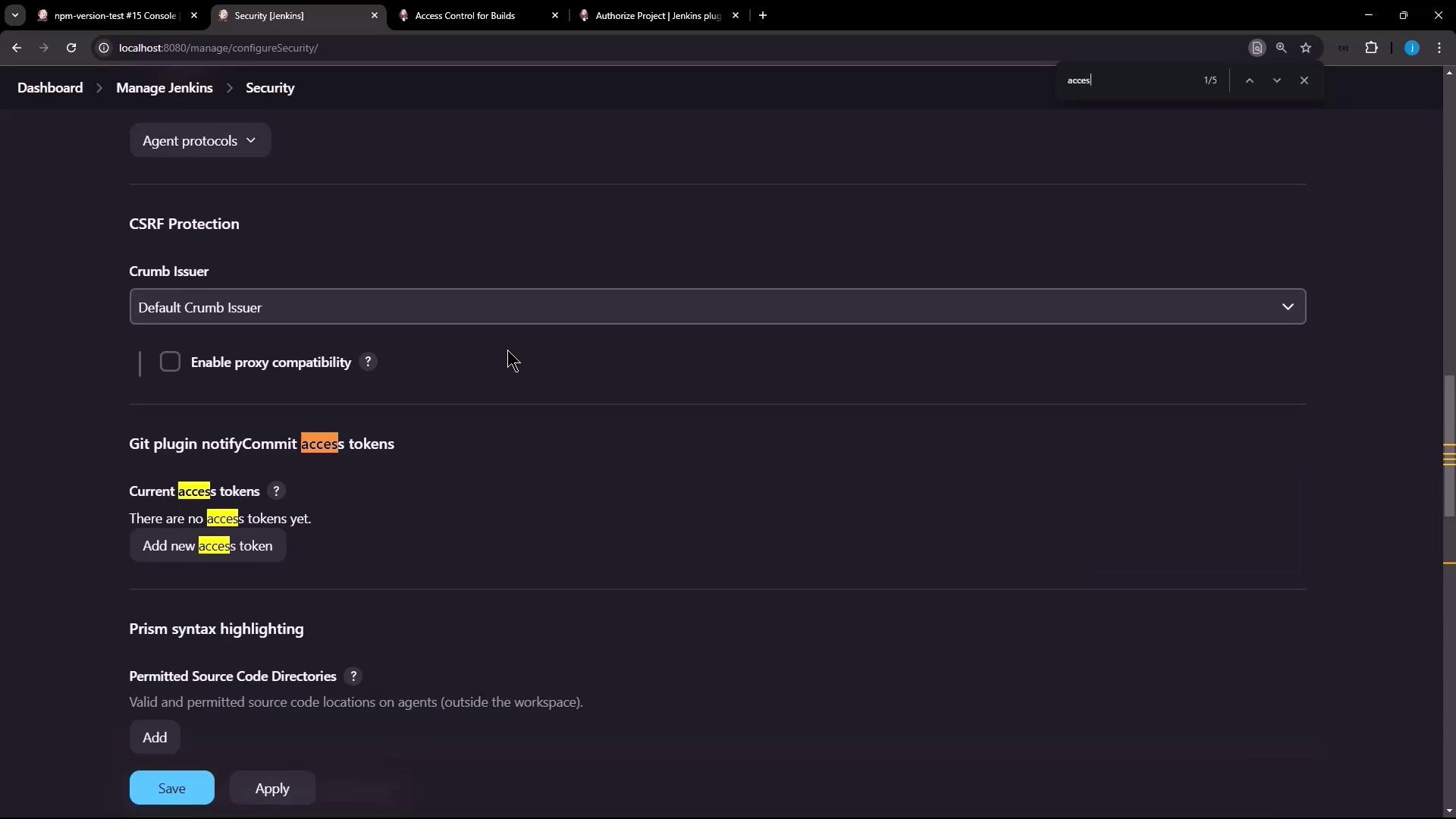
Trigger the npm-version-test job again:
Started by user siddharth
Running as SYSTEM
Building on the built-in node in workspace /var/lib/jenkins/workspace/npm-version-test
...
Finished: FAILURE
Even with Run as Anonymous, the build still runs as SYSTEM. To change this, configure the project itself.
4. Configuring Project-Level Authorization
Enabling project-based settings lets you override the global default per job.
- Open the
npm-version-testjob and click Configure. - Under Authorize Project, check Enable project-based security.
- In Build Authorization, select Project Configurable Build Authorization.
- Choose from allowed strategies (e.g., Run as User who Triggered Build, Run as Specific User).
- Save your changes.
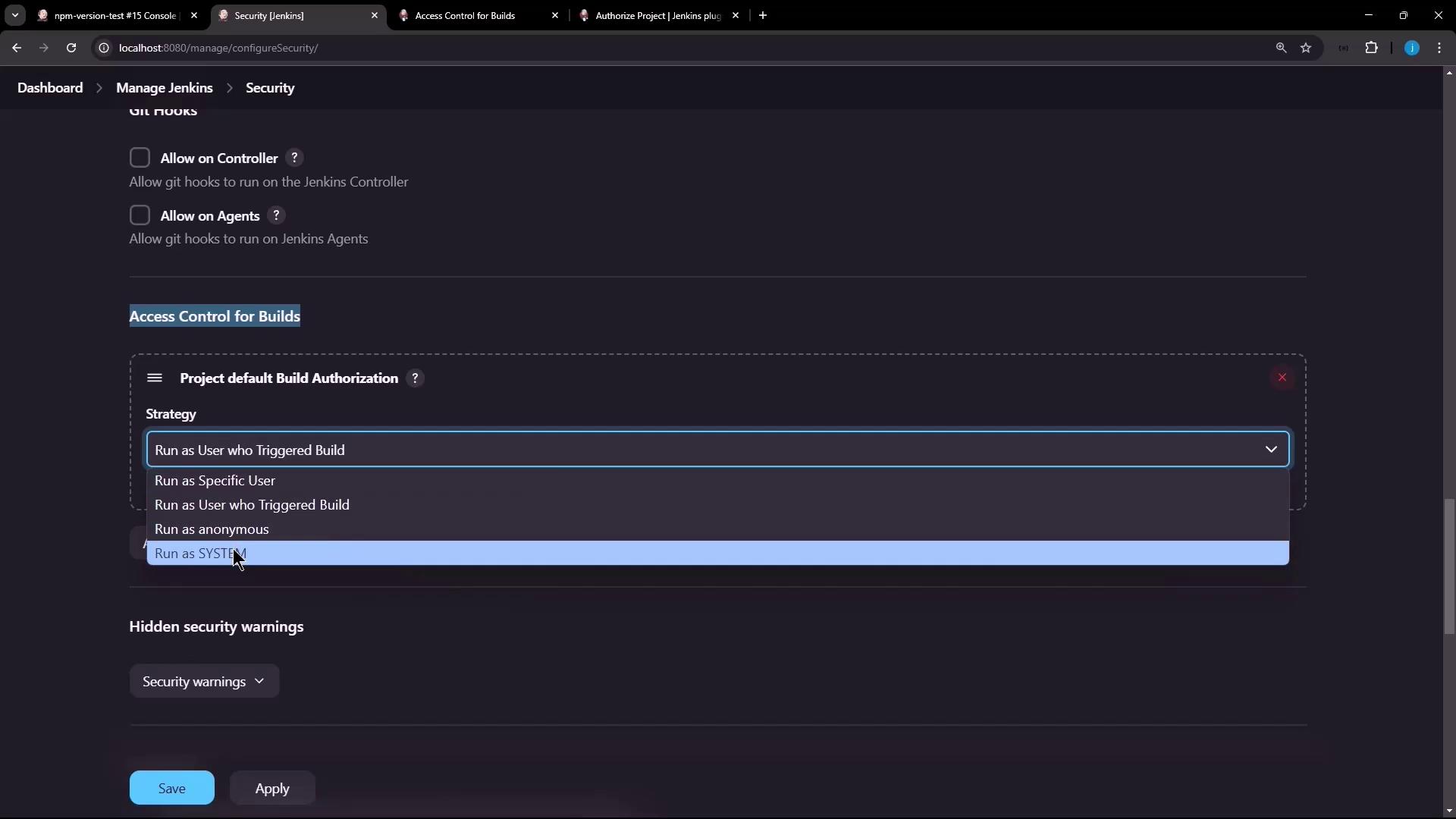
After saving, the Authorization dropdown appears in the job configuration:
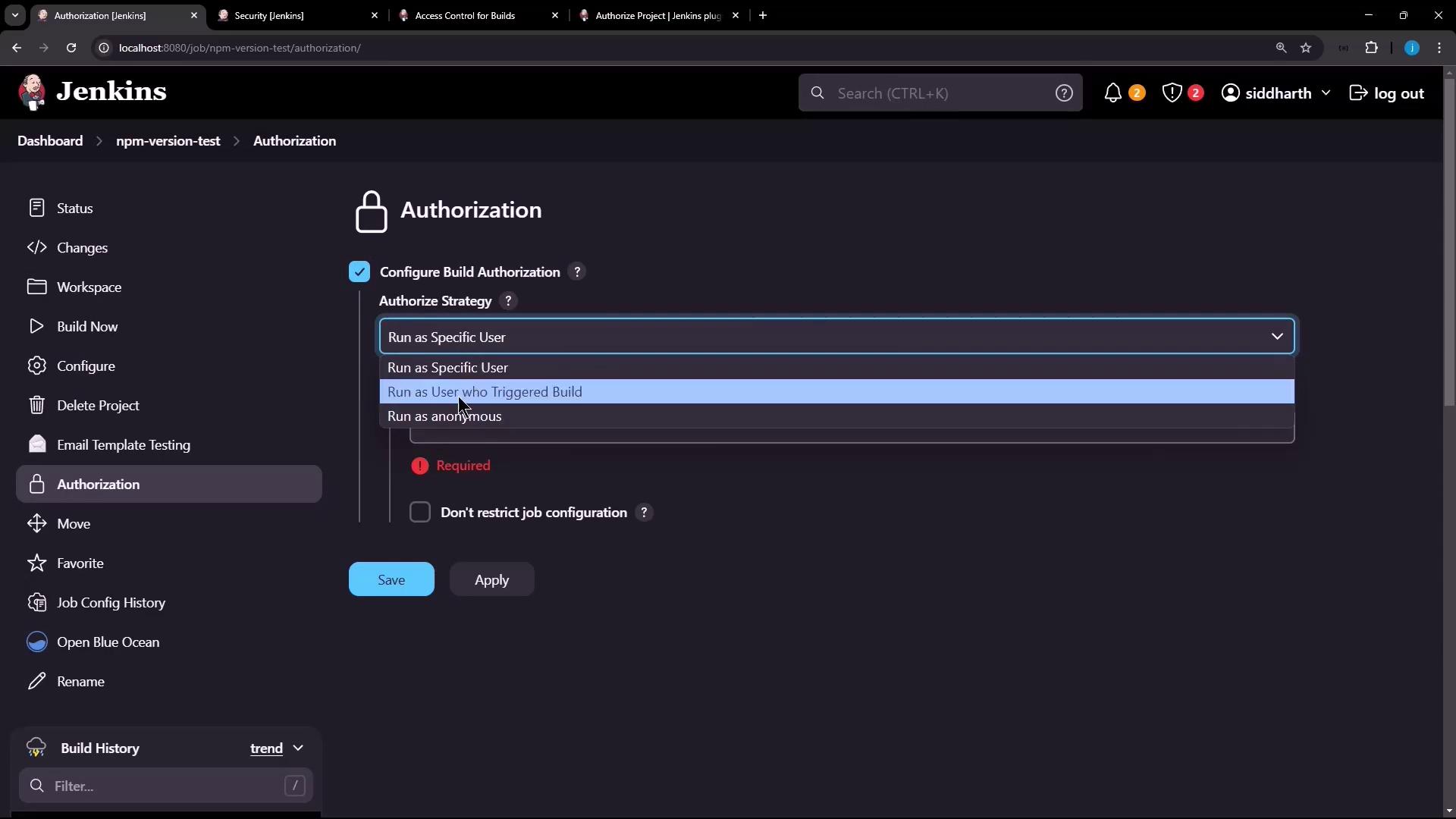
Warning
Ensure the triggering user has Build and Read permissions on the job; otherwise the build will fail due to insufficient rights.
Authorization Strategies
| Strategy | Description |
|---|---|
| Run as SYSTEM | Default Jenkins system user with full permissions |
| Run as User who Triggered Build | Inherits permissions of the user who started the job |
| Run as Specific User | Executes under a fixed, specified Jenkins user account |
| Run as Anonymous | Executes with minimal read-only permissions |
Verifying Project-Level Setting
Trigger the job again. The console should now display:
Started by user siddharth
Running as siddharth
Building on the built-in node in workspace /var/lib/jenkins/workspace/npm-version-test
...
Finished: FAILURE
Now Running as siddharth confirms the build runs under the correct user context.
By leveraging the Authorize Project plugin, you can enforce granular build permissions at both global and project levels, aligning Jenkins security with your organization’s access control policies.
Links and References
Watch Video
Watch video content